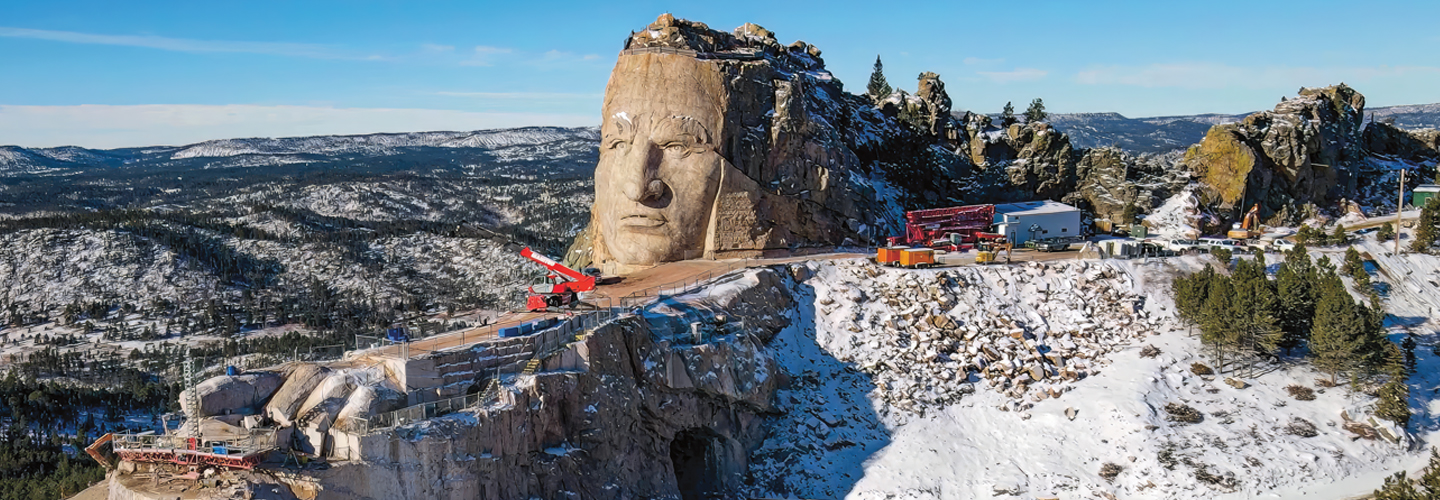Crazy Horse, whose Indigenous name was Tasunke Witco, was a Lakota Sioux chief. In the 1870s, he led the fight to preserve his people’s lands and way of life against an increasing wave of White settlers and U.S. Army troops.
Today a figure of the legendary hero on horseback is emerging, bit by bit, from the top of a mountain in the Black Hills of South Dakota—land the Lakota consider sacred. Work on the Crazy Horse Memorial began 75 years ago, in June 1948.There is still a long way to go, but if completed, it will be the largest sculpture in world history.

